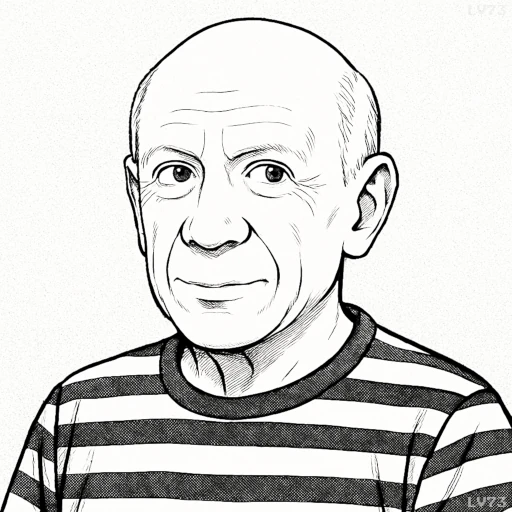“One does a whole painting for one peach and people think just the opposite – that particular peach is but a detail.”

- October 25, 1881 – April 8, 1973
- Born in Spain
- Painter, sculptor, printmaker
table of contents
Quote
“One does a whole painting for one peach and people think just the opposite – that particular peach is but a detail.”
Explanation
In this quote, Picasso reflects on the way people perceive art, especially the intention behind individual elements within a work. He suggests that artists often pour their entire focus and thought into specific parts of a painting, yet viewers may see those same parts as mere details, not recognizing the weight or significance the artist places on them. The example of the peach represents an element in a painting that, for the artist, holds profound importance, but for the observer, it may seem incidental or unimportant. Picasso’s quote touches on the disconnect between the artist’s vision and the viewer’s interpretation—how the context and creative process behind each element can be lost or misunderstood by an audience who views the final piece as a whole, rather than focusing on its individual parts.
This concept holds particular relevance in modern art, where artists often emphasize abstract or symbolic representations, and viewers may struggle to understand the deeper meaning or significance behind specific components. Picasso himself was known for disrupting traditional perspectives and challenging audiences to look beyond the surface. He frequently used seemingly small or insignificant objects to carry heavy symbolic weight in his works, encouraging viewers to think more deeply about what those elements represent.
An example of this can be found in the still-life paintings of Paul Cézanne, where everyday objects like apples or vases are given profound significance, inviting the viewer to appreciate their form and presence in the context of the entire painting. Similarly, modern abstract artists like Mark Rothko use seemingly simple shapes and colors that, when viewed through the lens of the artist’s intention, hold deeper emotional resonance. Picasso’s quote reminds us that in art, as in life, what may appear as a detail or insignificant element to an observer can carry immense meaning when understood through the artist’s eye.
Would you like to share your impressions or related stories about this quote in the comments section?
